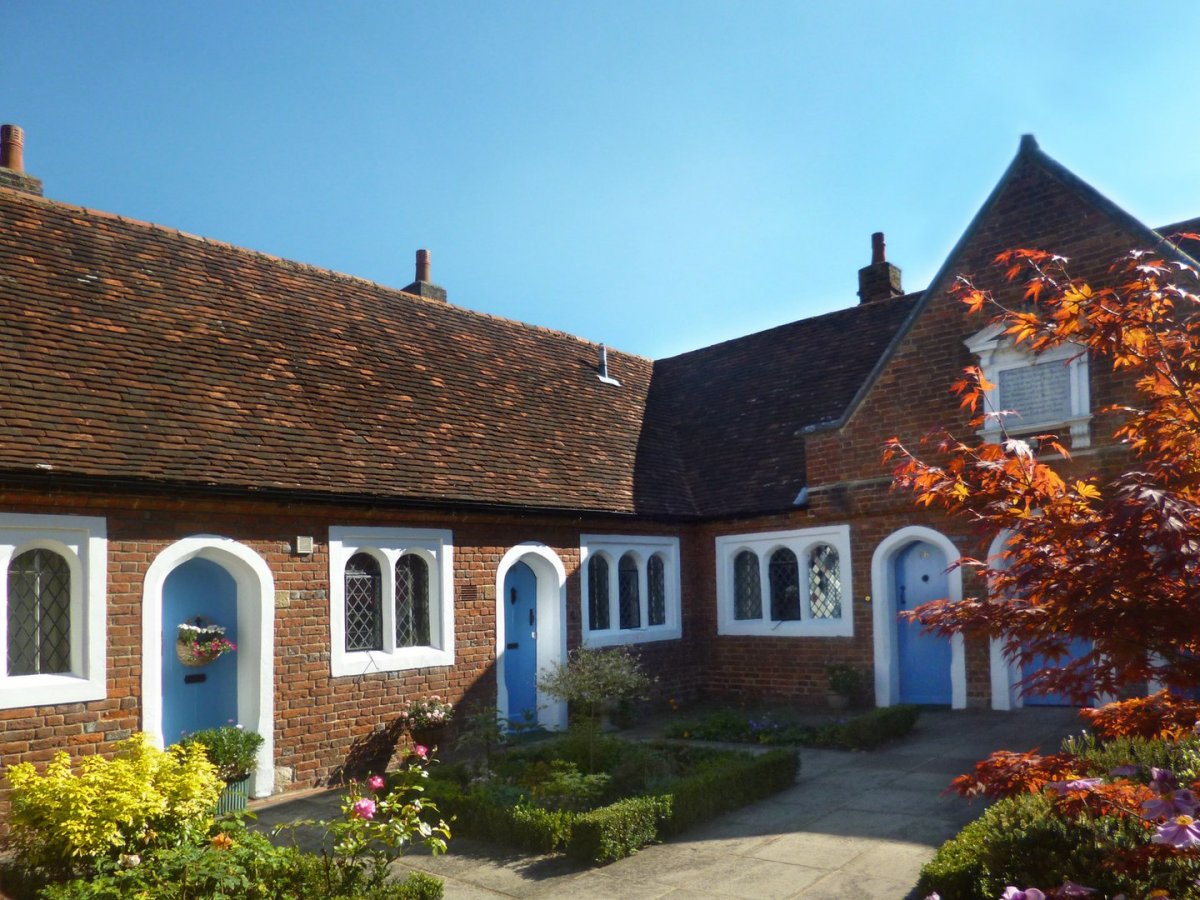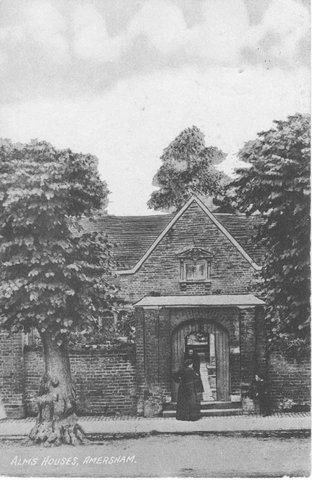We strongly object to plans to substantially alter to the Grade II* listed Drakes Almshouses in Amersham, Buckinghamshire. We are especially concerned about misguided proposals to address a damp problem, which we think are likely to cause further harm to these special 17th-century buildings.
The Almshouses were built in 1657 by Sir William Drake of Shardeloes (1606-69) to provide homes for six poor widows from the parish. Among their benefits were “a gown of London brown at Christmas each year for the first three years and alternate years thereafter; a pair of shoes, a pair of stockings and a shift twice a year at Christmas and Easter; and a load of billets four feet in length each year for firings”. Billets were used as firewood.

Credti: CC BY-SA 2.0 by Des Blenkinsopp
The Almshouses were altered in 1964, and again in 1993 when the number of dwellings was reduced to four. Given the extent of works already undertaken on these important buildings, we believe it is imperative that any further changes are carried out sensitively and with an understanding of traditional building materials.
The current proposals include renewing an injected DPC (damp proof course), replacing windows, enlarging windows and alterations to the internal layout.
The SPAB is strongly against the use of injected DPCs as they are damaging to historic fabric and do not work (download our advice notes on controlling damp and breathability). To remedy the damp problem, we have recommended: taking steps to tackle the source of the damp; improving the ventilation and air circulation; using breathable materials for plaster, paint and insulation; replacing the concrete floors with a more breathable material; carefully removing the cement render on the lower part of the wall; and moving soil away from the external walls.
 The proposed design for new windows is at odds with the existing ones, so these need to be reconsidered, and we’ve made suggestions of how new windows could sit more comfortably in the building. The justification for wishing to enlarge some existing windows is unclear, and there are no details in the application to show how many 17th-century handmade bricks will be removed. We do not object to the internal layout being revised, as it’s clear that the previous works were unsympathetic but we would need to see further details, such as the design of any new internal doors, the location of any surviving historic features and the routes of electrics and services. Whilst the layout is being altered, we suggest that the opportunity should be taken to replaster walls with a lime plaster and decorated with either a breathable paint finish or a limewash. With the other steps taken listed above, this will allow any moisture in the walls to evaporate and dry out naturally.
The proposed design for new windows is at odds with the existing ones, so these need to be reconsidered, and we’ve made suggestions of how new windows could sit more comfortably in the building. The justification for wishing to enlarge some existing windows is unclear, and there are no details in the application to show how many 17th-century handmade bricks will be removed. We do not object to the internal layout being revised, as it’s clear that the previous works were unsympathetic but we would need to see further details, such as the design of any new internal doors, the location of any surviving historic features and the routes of electrics and services. Whilst the layout is being altered, we suggest that the opportunity should be taken to replaster walls with a lime plaster and decorated with either a breathable paint finish or a limewash. With the other steps taken listed above, this will allow any moisture in the walls to evaporate and dry out naturally.
Although we are happy with the principle of some of the proposed works, we do not feel that enough information has been provided. The proposals to try and address the damp problems in this Grade II* listed building are likely to cause harm and to make the issues worse in the long term. Therefore we have written to Buckinghamshire Council to detail our strong objection to the application for listed buildings consent and recommend that it is withdrawn or refused.
You can read our response in full on the local authority’s website, using the application reference PL/20/2348/HB.
Do you have questions on how to care for or maintain your building? Call our free advice line to speak to a conservation professional.
Archive photo credit: Amersham Museum
